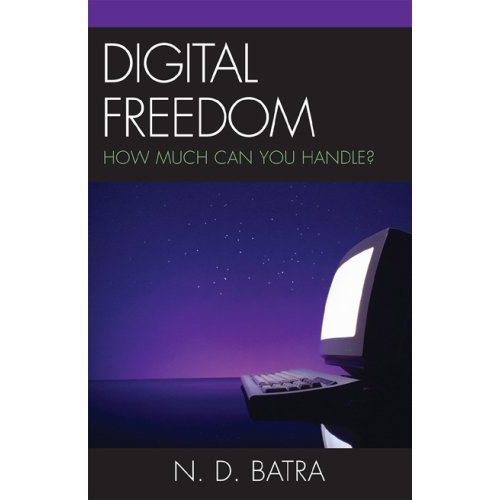Times of India
Unlock Their Minds
Narain D Batra
Monday, March 21, 2011
University campuses in the United States are increasingly becoming wireless, enabling students to use their laptops or mobile devices from anywhere. Classrooms are getting “smart” in the sense that teachers can connect to internet sources from their classrooms, besides using other instructional tools. Many professors put up their class notes and other teaching materials online. Online discussions and wikis are becoming common teaching tools.
An institute of higher education with graduate and postgraduate research programmes needs a sophisticated environment of virtual learning that allows its students and faculty to access not only its own databases but also global intellectual resources. Some universities such as MIT, Yale, Carnegie Mellon, University of California at Berkeley, for example, have made available their courses including video lectures online to the public. Through their open courseware, these universities have established global collaborative relations with other institutions and in the process built up their social capital and enhanced their reputation. MIT offers more than 2, 000 free courses online, including many courses on India, for example, “A Passage to India: Introduction to Modern Indian Culture and Society” and “Music of India”. As of today, its open courseware site has received 70 million visits from 215 countries. Some of its faculty members have become global brands. India’s technology elites are not lagging behind. Taylor Walsh, in a recent book, Unlocking the Gates, has profiled India’s “National Programme on Technology Enhanced Learning” a collaborative project of seven IITs and IISc, Bangalore, which at present offers 229 courses mostly in science and technology.
Making a classroom “smart” and globally available requires the university to have a professional studio/ staff to help faculty members to digitise and upload their lectures and other teaching materials online, apart from having enough server space to accommodate requests for access from the general public. It is an expensive undertaking. Some universities have developed virtual campuses for their graduate programmes, supplemented with periodic on-campus residencies during which students and faculty members make presentations, hold symposia and seminars. Of the various instructional methods used for teaching by American professors, the use of computer-aided instruction especially at the undergraduate level is limited to PowerPoint or video primarily to break the monotony of a long lecture. PowerPoint gives teachers an illusion of mastery of their subject matters but its excessive use can be a barrier to engaging students in class. Some students resent the technology because it tends to shut them out of live exchange. No one has come up with an equally good alternative to the lecture-discussion method that has been at the heart of the teaching-learning experience since ages.
Lecturing is done primarily to establish an intellectual and personal relationship with students even if the same material may be available in the textbook. Sometimes lecturing becomes a necessity especially when a tough topic and fundamentals have to be explained. When the textbook along with supplementary readings is brought to bear upon a discussion topic in the classroom, you see the beginning of learning, which is further enhanced through projects, term papers, weekly essay assignments and the stimulus of quizzes and midterm and final examinations.
Nonetheless, online teaching is raising some interesting possibilities. While in classroom discussions some students, especially girls, hesitate to participate, I have found that most students participate very enthusiastically in online discussions. Many of them express themselves freely whenever free-style discussion is encouraged. Online discussion creates a level playing field between the extrovert and the shy type.
Of course, students and professors miss a lot when there are no face-to-face encounters, dramatic moments which occasionally result in witticism, humour and other delightful confrontations that enhance teaching and learning, and make the dialogue such a joy. Information technology causes stress on the campus because no one can always keep up at the cutting edge of technology. Even younger faculty members who have grown up with the internet feel stressed; information technology is not always user-friendly. Teaching online requires a different attitude because communication between students and teachers is asynchronous. Many adult students find working on their own time a great advantage. But how to get one’s point across without facial gestures and vocal cues is a challenge. Classroom liveliness and vibrancy, the thrill of being with students, are absent online. Lecturing is performance and some of us become teachers because it gives us a sense of participation in the learning process.
Physical presence and face-to-face meetings can bring out the best in students. The adrenaline rush that one feels in the class when there is something unexpected, the laughter, the body language and voice inflection and the instant feedback, all are absent in the virtual classroom. How to bring one’s personality into the virtual classroom is a serious challenge.
Global exposure can be an incentive for some professors to improve their teaching but the jury is still out on whether a smart online presentation is all that we mean by good teaching. But how can one disagree with the MIT’s motto “Unlocking Knowledge, Empowering Minds,” whatever it takes, virtual or real?
(The writer is professor, communications and diplomacy, Norwich University)

Technology is becoming very vast and providing good facilities to all the people in the world. And usa is one of the first country to use all technologies first.
ReplyDeleteDatastage Tutorials